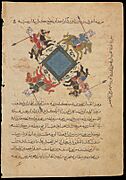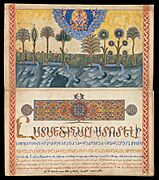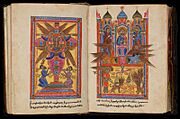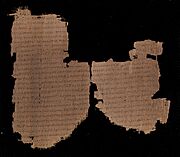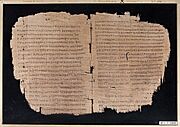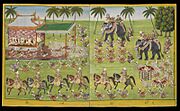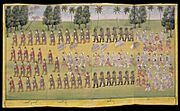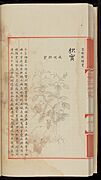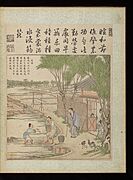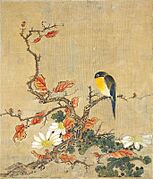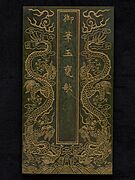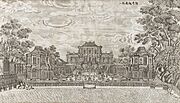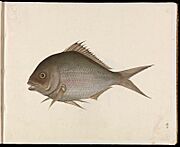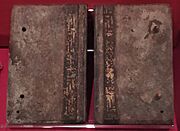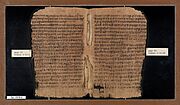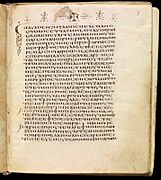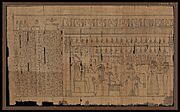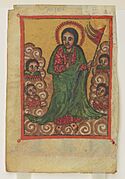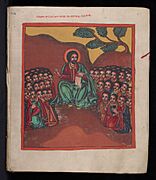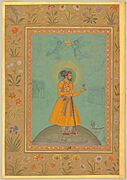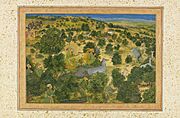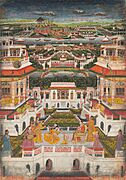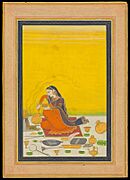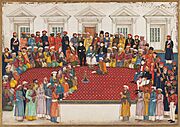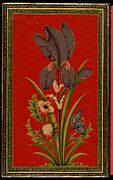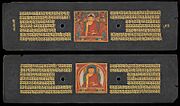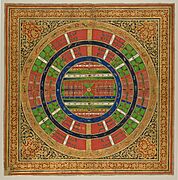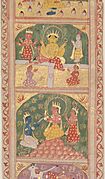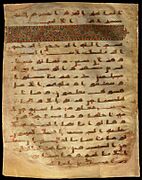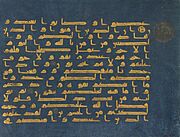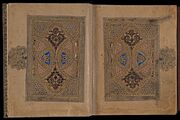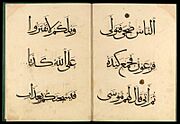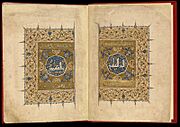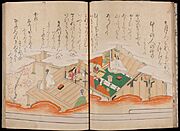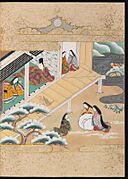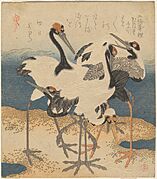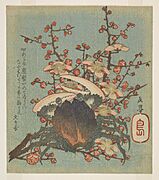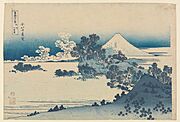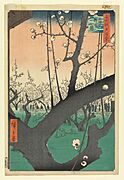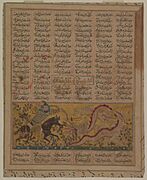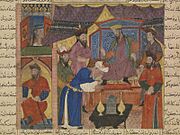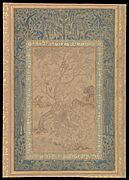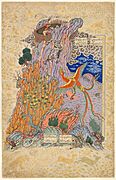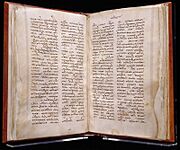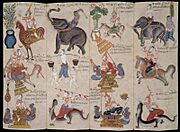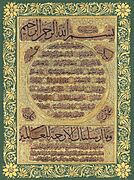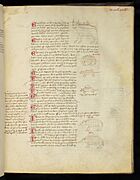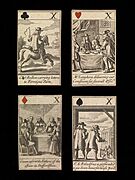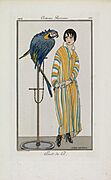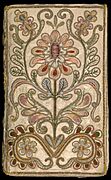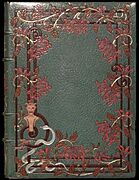Chester Beatty Library facts for kids

Entrance
|
|
| Established | 1953 |
|---|---|
| Location | Dublin Castle, Dublin |
| Type | Art Museum, Library, Visitor Attraction |
| Key holdings | Chester Beatty Papyri |
| Collections | East Asian, Islamic, Western |
| Collection size | approx 25,000 |
| Visitors | 350,000 (2018) |
| Founder | Sir Alfred Chester Beatty |
| Public transit access | Luas, Dublin Bus, DART |
The Chester Beatty Library, now known as the Chester Beatty, is a museum and library in Dublin. It was established in Ireland in 1953, to house the collections of mining magnate, Sir Alfred Chester Beatty. The present museum, on the grounds of Dublin Castle, opened on 7 February 2000, the 125th anniversary of Beatty's birth and was named European Museum of the Year in 2002.
The museum's collections are displayed in two galleries: "Sacred Traditions" and "Arts of the Book". Both displays exhibit manuscripts, miniature paintings, prints, drawings, rare books and some decorative arts from the Persian, Islamic, East Asian and Western Collections. The Chester Beatty is one of the premier sources for scholarship in both the Old and New Testaments and is home to one of the most significant collections of Western, Islamic and East & South East Asian artefacts. The museum also offers numerous temporary exhibitions, many of which include works of art on loan from foreign institutions and collections. The museum contains a number of priceless objects, including one of the surviving volumes of the first illustrated Life of the Prophet and the Gospel of Mani, one of the last surviving Manichaean scriptures. Many manuscripts from the Medinet Madi library are currently held at the Chester Beatty Library.
Contents
- Collections
- Collection highlights
- Arabic collection
- Armenian collection
- Biblical papyri collection
- Burmese collection
- Chinese collection
- Coptic collection
- Egyptian Papyrus collection
- Ethiopian collection
- Hebrew collection
- Indian collection
- Indian (non-Mughal) collection
- Islamic collection
- Japanese collection
- Papyrus collection
- Persian collection
- Syriac collection
- Thai collection
- Tibetan collection
- Turkish collection
- Western collection
- Western Miscellaneous collection
- Western Prints and Drawings collection
- Others
- See also
Collections
Western Collections
The Western Collection houses many illuminated manuscripts, rare books and Old Master prints and drawings. With biblical texts written in Armenian, Church Slavonic, Coptic, Ge’ez, Greek, Latin and Syriac, the collection's Christian material comes from diverse cultural and geographical backgrounds. The papyrus codices in the Chester Beatty include Papyrus 45 and Papyrus 46 among others which are some of the earliest surviving Christian artefacts in the world. In addition, a significant proportion of the rare printed books and prints are also Christian in focus. The collection of papyri is one of the most extensive in the world and includes almost the entire corpus of Ancient Egyptian Love Songs.
Islamic Collections
The Islamic Collection is divided between the Arabic, Persian, Turkish, Qur'an and Mughal-Era Indian Collections. The Arabic texts include treatises on religion, history, jurisprudence, medicine, geography, mathematics, astronomy and linguistics. Some of the finest miniatures from imperial Mughal albums, called Muraqqa', are housed in the Chester Beatty Library, with important paintings from the Late Shah Jahan Album and the Minto Album. The albums were the subject of an exhibition and publication by the Islamic curator, Dr Elaine Wright, Muraqqa': Imperial Albums of the Chester Beatty Library. Often on display is the Ibn al-Bawwab Qur'an, copied by one of the greatest medieval Islamic calligraphers.
Persian Collection
The Persian collection contains various miniatures and manuscripts of classical Persian poets such as Ferdowsi and Nizami.
East Asian Collections
The East Asian Collection has one of the most extensive collections of carved snuff bottles, many of which were included in the catalogue, The Chester Beatty Library, Dublin: Chinese Snuff Bottles. It also has Japanese art, including a pair of long picture-scrolls painted in the 17th century by Kanō Sansetsu.
Collection highlights
Source:
Arabic collection
-
'Manual on the Arts of Horsemanship' by al-Aqsara'i. Cairo, 1366.
Armenian collection
-
Armenian Gospel Book made in Isfahan in 1655
Biblical papyri collection
-
Fragments of Papyrus 46
Burmese collection
-
Court amusements and ceremonies. Myanmar, 19th century
Chinese collection
-
Chapters 10,110 to 10,112 of the 'Great encyclopaedia of the Yongle Reign'
-
'Diamond Sutra' written in Chinese, engraved and gilded on fifty-three folios of nephrite jade. 1732
Coptic collection
-
Papyrus with the fragments of the Book of Joshua. Egypt, 4th century
-
Coptic manuscript of the 'Pauline Epistles & Gospel of John'. Egypt, circa 600
Egyptian Papyrus collection
-
Book of the Dead of Lady Neskhons. Egypt, c. 300 BC
Ethiopian collection
Hebrew collection
Indian collection
-
Portrait of Raisal Darbari. Allahabad, circa 1600-1605
-
Jujhar Singh Bundela kneels in submission to Shah Jahan by Bichitr, circa 1630
-
Women on a palace terrace with a panoramic view. Faizabad, 1770
Indian (non-Mughal) collection
Islamic collection
Japanese collection
-
17th century manuscript of The Tale of Genji
-
Seven-mile beach in Sagami province (Sōshū Shichiri-ga-hama). Woodblock print from the series Thirty-six Views of Mount Fuji (Fugaku sanjūrokkei) by Katsushika Hokusai, c. 1831
-
Plum Park in Kameido, woodblock print from the series One Hundred Famous Views of Edo (Meisho Edo hyakkei) by Utagawa Hiroshige, 1857
Papyrus collection
-
Official correspondence of the Strategos of Panopolis concerning the preparations for the forthcoming visit of Diocletian. Panopolis, 298
Persian collection
-
The rescue at sea by Amir Khalil. From Prince Baysunghur's Rose Garden (Gulistan). Herat, 1427
-
Filigree leather book cover, for the Five Poems (Khamsa) of Amir Khusrau. Herat, 1485
-
Zal Rescued by the Simurgh by Sadiqi Beg. Miniature from the Shahnameh commissioned by Shah Abbas I. Probably Qazvin, between 1590 and 1600
-
Young man in a fur hat by Reza Abbasi. Isfahan, between 1600 and 1625
Syriac collection
-
Parchment manuscript of the Ephrem's Commentary on the Diatessaron and an exchange of letters between Severus of Antioch and Julian of Halicarnassus. Egypt, late 5th or early 6th century and 8th or 9th century
Thai collection
-
Fortune-Telling Manual (Phrommachat) with the twelve animals of the Thai zodiac and their associated attributes, avatars and plants. Thailand, c. 1845
Tibetan collection
Turkish collection
-
Binding from "The Cream of Histories" (Zubdat al-tawarikh). Istanbul, 1585-1590
-
Description of the Prophet (Hilya al-nabi), by Hâfiz Osman. Istanbul, 1691/1692
Western collection
Western Miscellaneous collection
-
Triptych with Virgin and Child and St Nicholas. Russia, c. 1800
-
St John the Forerunner. Russia, 19th century
Western Prints and Drawings collection
-
Popish Plot Playing Cards, after Francis Barlow. England, c. 1679
Others
-
First edition of 'The Prester John of the India' (Ho Preste Joam das Indias) by Francisco Álvares. Lisbon, 1540
-
Embroidered Binding. Possibly an Italian 18th-century binding of white silk Damask. The Book of Common Prayer and administration of the sacraments
-
Art Nouveau binding by Charles Meunier. Paris, 1897
See also
 In Spanish: Biblioteca Chester Beatty para niños
In Spanish: Biblioteca Chester Beatty para niños


